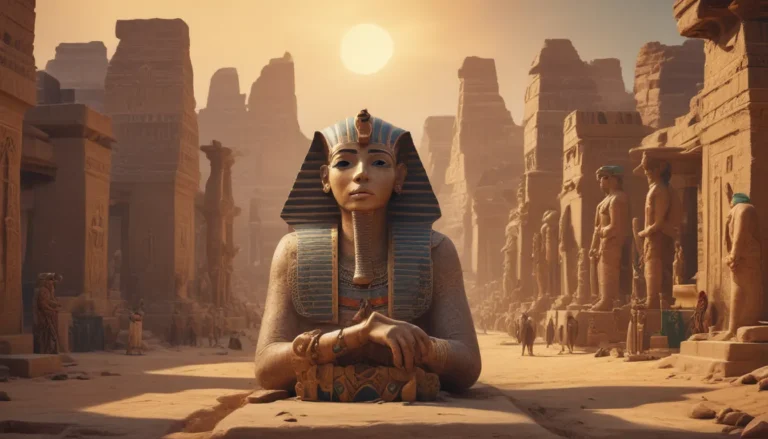The images in our articles may not match the content exactly. They are used to grab your attention, not to show the exact details in the text. The images complement the text but do not replace it.
Santeria, also known as Regla de Ocha or Lukumi, is a captivating Afro-Cuban religion that intertwines African spirituality with Catholicism. Originating from the traditions brought over by African slaves to the Caribbean, Santeria has grown in popularity and intrigue worldwide. In this article, we will uncover 16 fascinating facts about Santeria, shedding light on its history, rituals, deities, and cultural impact. Whether you seek to understand its religious facets, cultural significance, or simply wish to delve into the mystique of Santeria, this comprehensive guide will provide you with a deep insight into this captivating belief system.
Exploring the Roots of Santeria
Santeria, also referred to as La Regla Lucumí or Lukumi, emerges as a syncretic religion that emerged in Cuba during the 19th century. Blending elements of West African Yoruba spirituality with Roman Catholicism, Santeria has evolved into a distinct and widespread belief system practiced by millions globally.
Decoding the Name “Santeria”
The term “Santeria” translates to “the way of the saints” in Spanish. However, this name goes beyond mere saint veneration, encompassing a broader spectrum of religious practices and beliefs.
Orishas: The Essence of Santeria
Central to Santeria are the orishas, revered as the gods and goddesses from the Yoruba pantheon. With 16 major orishas embodying different facets of life such as love, wealth, and wisdom, practitioners actively engage in worshipping and seeking guidance from these divine entities.
The Art of Divination
Divination holds a pivotal role in Santeria, with spiritual advisors, known as santeros or santeras, offering insights and guidance through various methods like cowrie shell readings, tarot cards, and ancestral communication.
Embracing Ancestral Connections
Santeria places a strong emphasis on honoring and connecting with ancestors. Practitioners believe in the guiding and protective role of ancestors, honoring them through rituals and offerings.
Spiritual Purification and Healing Practices
Rituals and ceremonies in Santeria focus on spiritual cleansing and healing. Utilizing herbs, sacred baths, dances, and chants, practitioners seek spiritual renewal and restoration.
Controversy Surrounding Animal Sacrifice
Despite its controversial nature, animal sacrifice remains a part of specific Santeria rituals. This practice symbolizes a connection with the orishas, seeking their blessings and intervention.
Global Spread of Santeria
From its Cuban origins, Santeria has transcended geographical boundaries and is now practiced worldwide, particularly in countries with significant Afro-Caribbean populations like the United States, Brazil, and Puerto Rico.
Harmonizing Catholicism with Santeria
With a blend of Catholic elements, many Santeria followers also identify as Catholics, reflecting the cultural syncretism prevalent in this diverse belief system.
The Rhythms of Music and Dance
Integral to Santeria ceremonies are music and dance. The vibrant beats of drums and expressive movements of dancers evoke the presence of orishas, creating a sacred ambiance.
Unlocking the Power of Sacred Objects
Sacred objects like statues, amulets, and beads are utilized in Santeria rituals for their spiritual potency, aiding in connecting with the divine and invoking blessings.
Journey to Initiation and Priesthood
Becoming a Santero or Santera requires a rigorous initiation process involving rituals and a profound understanding of the religion. This journey culminates in recognition as a priest or priestess.
Community: A Pillar of Support
Community forms a cornerstone of Santeria, fostering collective worship and camaraderie. Ceremonies and gatherings bring practitioners together to share in spiritual experiences and mutual support.
Upholding Oral Traditions
Santeria’s teachings and rituals are primarily transmitted orally across generations, preserving knowledge and maintaining the religion’s authenticity.
Advocating Social Justice
Santeria has played a vital role in advocating for social justice and empowering marginalized communities, fostering cultural pride among Afro-Caribbean individuals.
Respect for Nature and the Environment
Embracing reverence for nature, Santeria practitioners aim to live harmoniously with the environment, acknowledging the interconnectedness of all living beings.
Embracing the Mystique of Santeria
Santeria stands as a complex and intriguing religion that intertwines Catholicism with traditional African beliefs, offering a unique spiritual journey filled with rituals, ceremonies, and homage to the orishas. By exploring these 16 captivating facts about Santeria, one gains a deeper understanding of its origins, beliefs, and rituals, emphasizing the importance of approaching this belief system with respect and an open mind. Santeria continues to inspire individuals globally, providing a path that resonates with healing, unity, and personal growth.
FAQs
-
What is the origin of Santeria?
Santeria originated in Cuba, blending traditional African religions with Catholicism. -
Who are the Orishas in Santeria?
The Orishas are deities worshipped in Santeria, embodying different aspects of nature and human experiences. -
Is animal sacrifice a part of Santeria rituals?
Yes, certain Santeria rituals involve animal sacrifices as offerings to the Orishas. -
Is Santeria practiced globally?
Santeria has spread worldwide, particularly among Afro-Caribbean communities in countries like the United States and Brazil. -
Can individuals practice Santeria rituals at home?
Yes, individuals can engage in rituals like prayers, lighting candles, and creating altars dedicated to specific Orishas in their homes. -
Is Santeria compatible with other religions?
Santeria can be practiced alongside other religious traditions, often integrated with Catholicism. -
How does one become initiated into Santeria?
To become initiated into Santeria, individuals undergo rituals led by a priest or priestess to establish a spiritual connection with the Orishas. -
Can non-initiated individuals participate in Santeria ceremonies?
Non-initiated individuals can attend Santeria ceremonies as observers or supporters. -
Is Santeria recognized as a legitimate religion?
Yes, Santeria is acknowledged as a legitimate religion in various countries, including the United States. -
What core values does Santeria uphold?
Santeria emphasizes ethical behavior, promoting values like honesty, respect, and compassion towards others and the environment.
In Conclusion
Santeria’s intricate tapestry of beliefs and traditions offers a profound insight into a diverse religious landscape. From its profound rituals to spiritual depth, delving into Santeria opens doors to appreciating diverse cultures and spiritual practices. Exploring courtship customs or spirituality across various traditions further enriches one’s understanding of human experiences and fosters a deep appreciation for cultural diversity.
Your Feedback Matters
Our dedication to delivering engaging and trustworthy content drives us to showcase real user insights and diverse perspectives. Touched by a commitment to quality and credibility, every fact on our platform undergoes meticulous review by our dedicated editors. Trust our pledge to authenticity and quality as you embark on a journey of exploration and learning with us.






